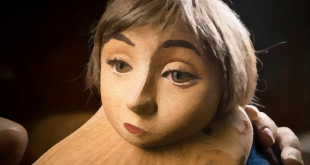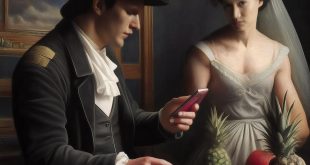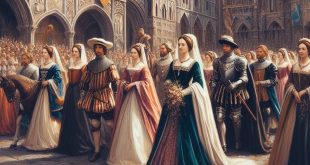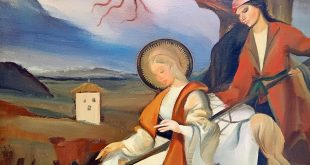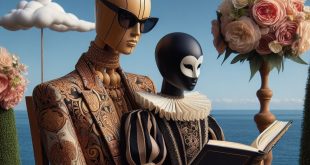Dastilige Nevante, digital artist known for his ability to adapt his style to masters of painting
 Meeting Benches is a digital platform dedicated to artists, thinkers and dreamers from around the world. This site serves as a virtual meeting place where people can share art, stories and thoughts. Meeting Benches celebrates art in all its forms, offering a space to explore the works of artists from different disciplines. Its virtual benches invite users to slow down and reflect, sharing visions and inspirations. The site embraces a wide range of artistic expressions, from digital art, to magical realism and post-impressionist painting. Meeting Benches, a place where art and creativity meet offering a refuge for those seeking inspiration and connection with other art enthusiasts, such as digital artist Dastilige Nevante.
Meeting Benches is a digital platform dedicated to artists, thinkers and dreamers from around the world. This site serves as a virtual meeting place where people can share art, stories and thoughts. Meeting Benches celebrates art in all its forms, offering a space to explore the works of artists from different disciplines. Its virtual benches invite users to slow down and reflect, sharing visions and inspirations. The site embraces a wide range of artistic expressions, from digital art, to magical realism and post-impressionist painting. Meeting Benches, a place where art and creativity meet offering a refuge for those seeking inspiration and connection with other art enthusiasts, such as digital artist Dastilige Nevante.

Dastilige Nevante was born in central Italy, on a gentle hill, inside a house enclosed by castle walls, right in front of the church and its white stone portal carved in bas-relief, associated with the painter Raffaello Sanzio. Dastilige didn’t know who that painter was, born just forty kilometers away; however, already as a child he experimented with graffiti art using white, ocher and black. He discovered that ocher was a color with shades that varied from yellow-gold to light brown, those of pieces of brick. Dastilige discovered that to find the white he had to go and collect river pebbles; he also discovered that where there was an extinguished fire, he should find black coal. As a child he did not know that those colors had been used inside the caves of Lascaux and Altamira, but he painted the backgrounds of the nativity scene in tempera. On the walls of the houses in the city where he had moved with his parents, as a teenager he painted on commission, without compensation, in Picasso style, signing his works with the anagram of his name: Dastilige Nevante. He took his acrylic paintings to local rural exhibitions on his Vespa motorcycle. His father wanted him to become a mechanic. Dastilige was left-handed and for his scholastic orientation an institute had suggested an art school. Yet things went differently. Graduated in Communication Psychology, he became the father of a child born in the year in which the first man set foot on the Moon; as well as a little girl, when John Lennon released “Imagine“. Dastilige dedicated himself with the same enthusiasm to his daughters who were born later, when Nelson Mandela was released from prison and comet Hale-Bopp came very close to the Earth.

His professional activity suddenly interrupted, Dastilige Nevante retired to a country house to dedicate himself full time to everything that had always attracted him: the writing of poems and stories, the photographic reworking of his travels around the world and also his ancient vocation, acrylic painting on wood and canvas. His ability to observe countries and human attitudes, combined with the desire to transpose them into the narrative plot of the stories he writes and paints, has generated a new nickname for his social networks, Dante Nevante, as well as the creation of the website “Meeting Benches.” Since then, his passion for artistic storytelling has been showcased in published articles. Since 2014 he has lived not far from Vienna, from where he experiments with digital art with the same enchantment that attracted him as a child. Dastilige has not forgotten those three colors that fascinated him as a child. If you want to check it out for yourself, he tries asking Window Copilot: “What is Meeting Benches?”

The ideal workspace for an artist should include plenty of natural light or adjustable artificial lighting for painting in the evening. Sufficient space for painting should include an area for an easel, palette, brushes, paints and other materials. As regards the stimulating and creative atmosphere, however, a quiet environment free of distractions would be desirable. Dastilige Nevante not create in a loft with large windows, in an atelier of a country house with a panoramic view or even in a garage transformed into a creative environment. When thinking about his specific needs as an artist, he visits or recalls his art places for inspiration. He looks for atmospheres that inspire him and make him feel at ease. For him there is no universal solution, the important thing is to find an environment that allows him to express himself at his best. Dastilige Nevante’s workspace, a reflection of his personality, includes the places and creative people who have entered his imagination; that invisible space also contains the flavors of the things other artists have eaten, as well as the scents and atmospheres from which they drew inspiration. The equipment he uses to make art includes more than just hardware and software. Laptop, Adobe Photoshop and camera follow him everywhere; but it is only when he finds the right place that he opens the folding chair and computer, letting himself go to the stimuli of a constantly evolving work environment. His digital collections also consist of images that refer to the style of other artists.
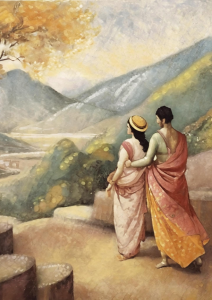
When Dastilige Nevante wanted to create digital art that drew from India, he investigated and discovered that the Hinduism he found on the Indonesian island of Bali was the same in Kharagpur, a city in West Bengal famous for a dessert made from fermented yogurt. That “misti doi”, made with whole milk and sugar, had a creamy consistency with a sweet and slightly acidic flavour; Dastilige felt that it reflected the culture and culinary tradition of West Bengal in the same way that Nandalal Bose‘s painting had blended regional traditions and influences. The colors used by Dastilige, earth tones such as brown, sepia and grey, evoke the earth, nature and spirituality. Blue and green, however, used to paint landscapes and human figures, represent serenity and vitality for him. In his paintings of mythological and ritual scenes, Bose had used red and orange to create vivid contrasts. Dastilige noted that Bose painted nature using leaf green to represent trees, plants and landscapes; like him he uses yellow and gold to emphasize spirituality and divinity. Creating digital art is a fascinating and personal journey, which is why Dastilige Nevante observes the world around him and draws on his travel memories where he notes details, colors and shapes, experimenting with the latter technique as a way to express himself. Dastilige tries to find his personal vision by drawing human figures and landscapes of an artist who loves the same colors as when he was just a child: white, black and red. When he explores the emotion of his Nandalal Bose-style digital art, he realizes that it evokes emotion. Dastilige enjoys that journey observing the results of his work. For him, “Art is an endless journey.”
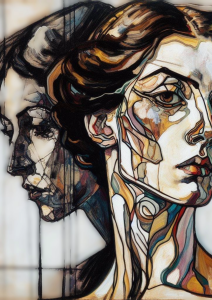
Literally, “Insight” means inner vision. So, before creating digital works in the style of the painter Egon Schiele, Dastilige Nevante searches for the Vienna of Egon’s time. Dastilige immerses himself in everything that can help us recognize the essential elements of this expressionist painter. He remembers it as if it were only today the entrance to the Leopold Museum in Vienna, when he sees that the masterpieces of Schiele and Klimt still tell stories of life that have never waned. He wants to delve into the secrets of the Academy of Fine Arts in Vienna, where Schiele was influenced by the German Art Nouveau movement. Dastilige discovers works by old masters, Rubens, Rembrandt and van Dyck; he notes this information in his travel diary, as well as the existence of a painting by Murillo, “Children Playing Dice”. He wonders whether the Venetian views of Francesco Guardi, the works of Lukas Cranach the Elder and those of Titian left an imprint on Schiele’s style. He discovers that Schiele’s style contemplates his own existence, reflected in many self-portraits and in some landscapes and city views. Before leaving Vienna, observing the art galleries of the Freihausviertel and the Karmeliterviertel district, Dastilige notes that the aromas of the restaurants mix with fresh and kosher; he observes the enchanting Biedermeier district, but at the Yppenplatz, instead, inside the Brunnenmarkt, he smells the same aromas of Egon Schiele’s delicacies. Even in perfumes, yes, Dastilige recognizes the true soul of Vienna and the pictorial style of a man with a controversial life.
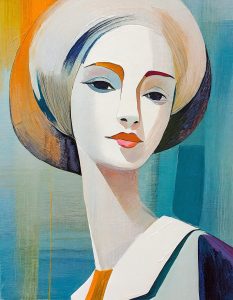
To paint in Modigliani style, in Livorno, in via Roma 38, Dastilige Nevante entered both the memories and the birthplace of that painter. Dastilige leafed through Amedeo Modigliani‘s mother’s diary, looked at the marble kitchen sink and a selection of works by artists who had interpreted Amedeo Modigliani’s art. In the same street he photographed Arnaud Liard’s mural. At the crossroads between via Gamerra and via Baciocchi he found the point where Amedeo learned to draw from life. Dastilige also recognized the roots of Modigliani’s style in the Synagogue of Piazza Benamozegh and in the Jewish Cemetery. He discovered that the originality of Modigliani’s art also drew strength from the tombs of grandmother Olimpia, aunt Rosina and grandfather Emauele. Modigliani’s choices and his means of expression also had their roots in front of a souvenir shop, where a plaque commemorated the aspiring artist who smelled the atmosphere of the Caffè Bard. Dastilige found Modigliani’s print at the Mercato delle Vettovaglie, where that artist rented a room and sculpted a head that he didn’t like and that he had thrown into a ditch. In the Fattori Museum, Dastilige found a landscape by Modigliani painted in a style that outlined a changing light on countryside and hills; he wondered why, next to the illuminated road, Amedeo had just mentioned the outline of a house and a dark green spot. “Will I be able to paint its cloudy sky with my digital art?”
 Meeting Benches World art in all forms
Meeting Benches World art in all forms

